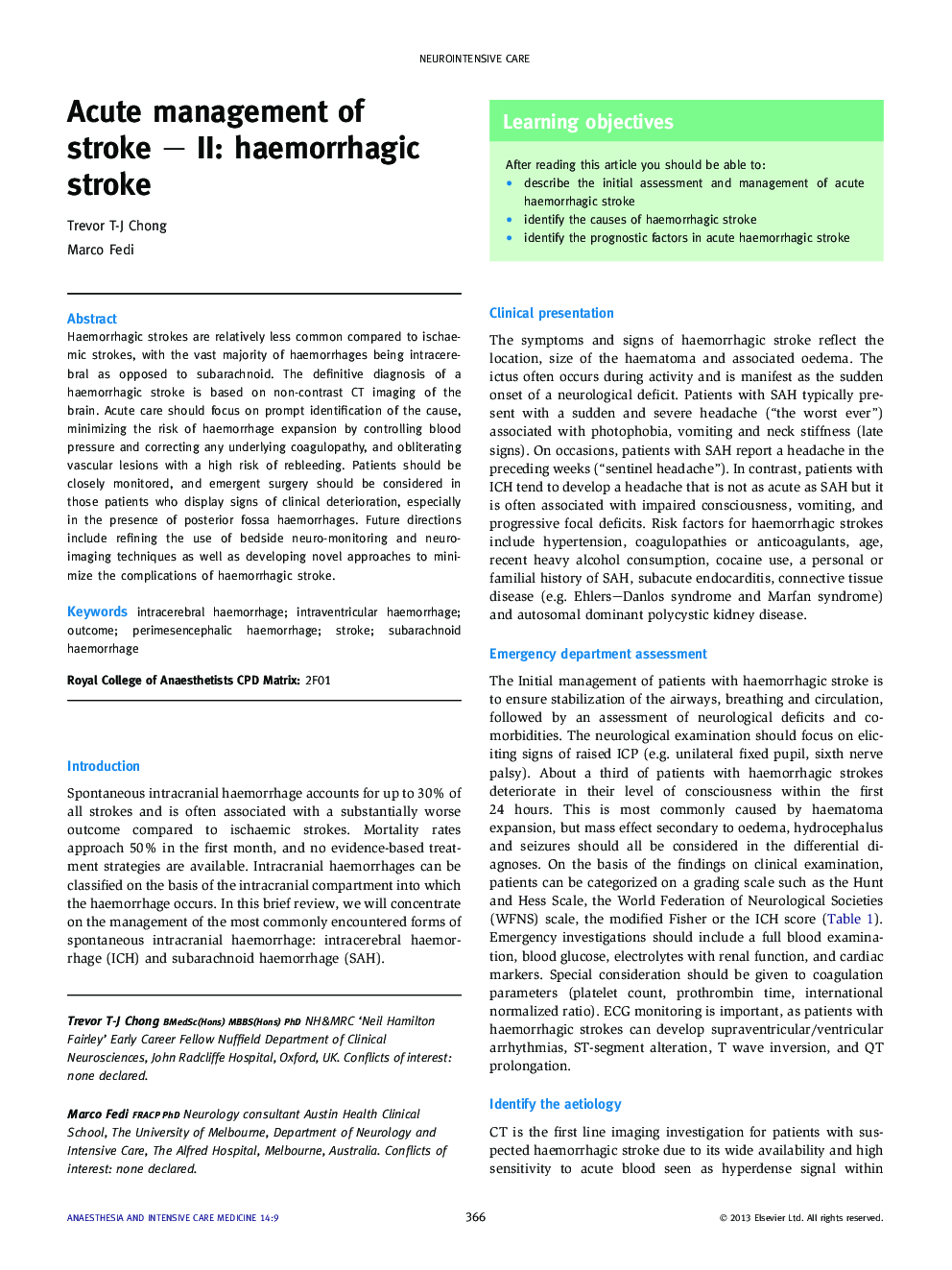| Article ID | Journal | Published Year | Pages | File Type |
|---|---|---|---|---|
| 2742633 | Anaesthesia & Intensive Care Medicine | 2013 | 5 Pages |
Haemorrhagic strokes are relatively less common compared to ischaemic strokes, with the vast majority of haemorrhages being intracerebral as opposed to subarachnoid. The definitive diagnosis of a haemorrhagic stroke is based on non-contrast CT imaging of the brain. Acute care should focus on prompt identification of the cause, minimizing the risk of haemorrhage expansion by controlling blood pressure and correcting any underlying coagulopathy, and obliterating vascular lesions with a high risk of rebleeding. Patients should be closely monitored, and emergent surgery should be considered in those patients who display signs of clinical deterioration, especially in the presence of posterior fossa haemorrhages. Future directions include refining the use of bedside neuro-monitoring and neuro-imaging techniques as well as developing novel approaches to minimize the complications of haemorrhagic stroke.
